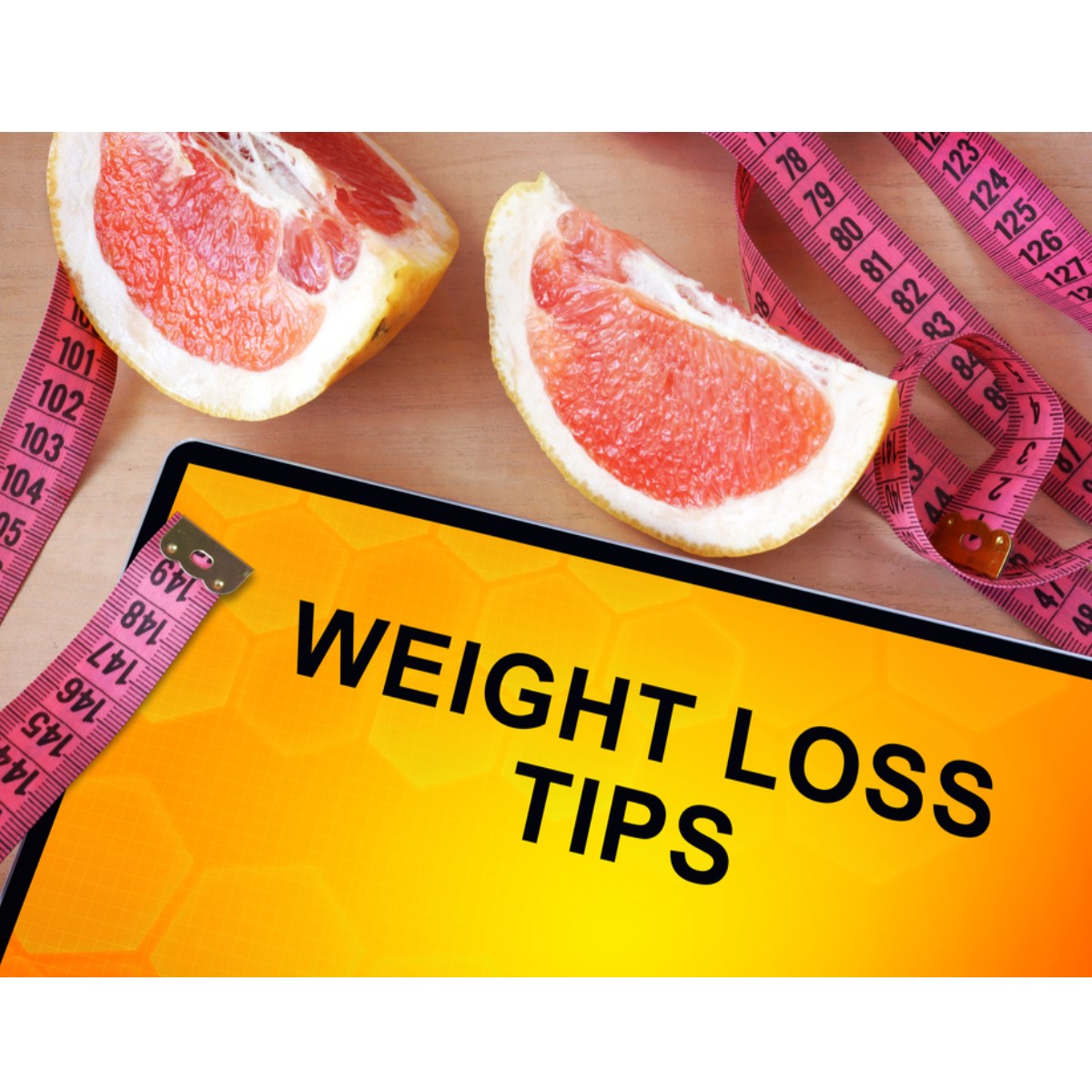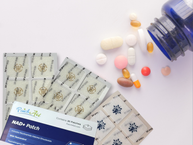Is weight loss hard? Sure! But it can be easier! These simple tips can help you lose weight more easily. They work by cutting calories that you take in, increasing calories that you burn, and making your body more efficient. PatchAid Patches for Weight Loss are designed to support your weight loss efforts so you get the results you deserve for your effort. Here are tips to help you lose weight.
Drink More Water
If you want to make one easy change, this is the one to make. It doesn’t take much planning, you don’t have to give anything up, it takes no extra time, and it’s free. Just drink more water. That simple change can help fill you up, increase energy, and help you lose weight. You can get more of this calorie-free drink by adding in a cup before each meal, setting a timer to remind you to drink every couple of hours, or filling some water bottles and making sure you empty them by the time the day is over. It’s up to you how you do it!
Order the Small Size.
Get in the habit of ordering the small size. That goes for pretty much anything except for water, salads, and vegetables. That way, you can cut calories and still get foods you love. Ordering a small fries and junior hamburger can save 600 or more calories compared to ordering a large fries and double cheeseburger. If you’re still hungry, add on some carrot sticks or apple slices. Other ways to eat less include ordering a muffin top instead of a whole muffin, a mini bagel instead of the whole bagel, and thin-crust pizza instead of thick-crust.
Add Vegetables.
Vegetables are low in calories and big in volume. They can fill you up without adding many calories to your day. Non-starchy vegetables are lowest in calories. Examples include lettuce, spinach, kale, and other greens, eggplant, zucchini, carrots, onions, tomatoes, cucumbers, celery, bell peppers, asparagus, radishes, and cauliflower…for starters.
These are some ways to add vegetables.
- Have a green salad with your protein, such as chicken or fish.
- Use riced cauliflower or spiralized zucchini or carrots instead of rice and pasta.
- Add cooked vegetables to soup, casseroles, and sauces.
- Make vegetable stir fries with chicken, fish, shrimp or tofu.
- Include lettuce, sprouts, cucumbers, tomatoes, or other vegetables in sandwiches.
- Dip vegetables into hummus, guacamole, or salsa.
It’s a good rule of thumb to include vegetables with most meals and snacks, or to make sure half of your plate or bowl is filled with vegetables most of the time.
Pack Your Lunch.
Packing your lunch means that you’re planning ahead. When you pack your lunch, you’re choosing exactly what goes in it. Plus, you’re making sure that you have something available to eat at lunchtime instead of opting for fast food, other prepared food, or something from a vending machine or convenience store.
It’s not hard to pack a healthy lunch. You might try to include some protein and fiber every day. These are some examples of lunchbag-friendly options.
- Cottage cheese with raw vegetables and nuts.
- Whole-grain cereal with a hard-boiled egg and raw vegetables.
- Leftover cooked vegetables and chicken or fish.
- Tuna wrap with lettuce and tomatoes on a small, high-fiber tortilla.
Leftovers are always great, too. They’re easy and tasty.
Keep Your Kitchen Clean.
We don’t mean scrubbing it, though that can burn calories. We mean keep it clean from foods that you know you shouldn’t be eating because they’re calorie-dense, not very filling, and likely to throw you off of your meal plan.
If you can, try to keep these types of foods out of your pantry, freezer, and fridge. They’re just too easy to eat!
- Potato and tortilla chips
- White crackers
- Cookies and snack cakes
- Candy bars
- Bread (if it’s a trigger for you)
Watch Your Alcohol Intake.
An alcohol-drinking occasion can pile on the calories. A serving of wine, beer, or liquor can have 100 to 150 calories. Mixed drinks can have 200 or more calories each. When you have a few, that adds up to a lot of calories, and that’s before counting food that you might eat during and after drinking.
While drinking and afterwards, it’s common to eat unhealthy foods. Think of typical bar foods, such as jalapeno poppers, popcorn shrimp, mozzarella cheese sticks, wings with dip, and sliders. They’re high in calories! Later, it’s common to be hungry for late-night fare such as burritos or pizza.
It’s also normal to overeat while drinking, since alcohol reduces your ability to say “no.” That can mean a night of drinking and eating could set you back thousands of calories. Instead, it’s best to avoid alcohol or have a set limit and plan for every time you drink.
Stand Up.
Did you know that sitting for hours at a time is unhealthy, even if you work out at the gym diligently? When you sit without moving, your metabolism can shift within 30 minutes and make it harder for your body to control blood sugar.
If you lead a sedentary lifestyle, such as having a desk job, make it a point to stand up for 1 to 2 minutes every 30 minutes. You can stretch or pace. Set a timer if that makes it easier for you to remember to do this.
Get More Sleep.
Most adults are regularly short on sleep. That’s a shame for weight loss! You might assume that getting less sleep gives you more time to be moving and burning calories, but that’s not what usually happens. Instead, sleep deprivation makes you hungrier, messes with blood sugar control, and makes you more likely to crave sugary foods.
Exercise More.
Yes, it’s true. Exercise burns calories. While it’s also true that your diet has more of an effect on weight loss than your exercise program does, exercise is especially important for keeping weight off. It turns out that people who exercise for at least 1 hour most days are more likely to keep pounds off after they’ve lost them.
If you have any health concerns, be sure to check with your doctor before you start an exercise program or change up your routine. Brisk walking is a good place to start for many people. Hiking, biking, swimming, gardening, playing sports, and dancing are all possibilities.
Shrink Your Plate.
Use a smaller plate or bowl, and you’re likely to eat less. We have a natural tendency to eat what’s on our plates. Have a smaller plate, and you may serve yourself less food since your plate will look fuller. Remember you can always fill it up with vegetables, too, to keep portions of higher-calorie foods small.
Eat a Healthy Breakfast.
People who eat breakfast tend to eat fewer calories throughout the day, and to feel less hungry. That can add up to weight loss. A healthy breakfast might include a source of fiber and protein. These are some examples.
- Unsweetened whole-grain cereal with berries and yogurt.
- Egg-white omelet with vegetables and low-fat cheese.
- Egg whites and cheese on a whole-grain English muffin.
- Peanut butter and banana on whole-grain toast.
Support Weight Loss with Patches.*
PatchAid Patches for Weight Loss Support are formulated to help you get more results from your weight loss efforts. These are some of our patches.
Use Vitamin Patches to Support Ketosis.
A keto diet is very low in carbs. You have to keep your carb intake so low that it can be challenging to stay in ketosis. The Keto-BHB Patch by PatchAid is designed to help.* It has beta-hydroxybutyrate. That is a product of ketosis. Having more in your body may help your body stay in ketosis.
Stay Nourished
Certain nutrients are necessary for healthy weight loss. Protein, for example, lets you maintain lean body mass. B vitamins are needed for healthy metabolism and getting energy from the foods you eat. Iron is needed to keep your energy up. And there are more!
While you may be cutting back on the foods you eat so you can lose weight, you might also be low on nutrients. The Multivitamin Patch by PatchAid has essential vitamins and minerals that may not be in your diet every single day.*
Weight loss is hard if you go about it the hard way, but there are so many ways to make it easier. Simple changes to your diet, increases in your activity levels, and managing sleep and stress can all help. Weight Loss Vitamin Patches by PatchAid can also support your goals.*
*The Food and Drug Administration has not evaluated these statements. PatchAid patches are not intended to diagnose, treat, cure or prevent any disease. Anyone with a medical condition should seek the advice of a licensed medical practitioner. Individual results may vary.







